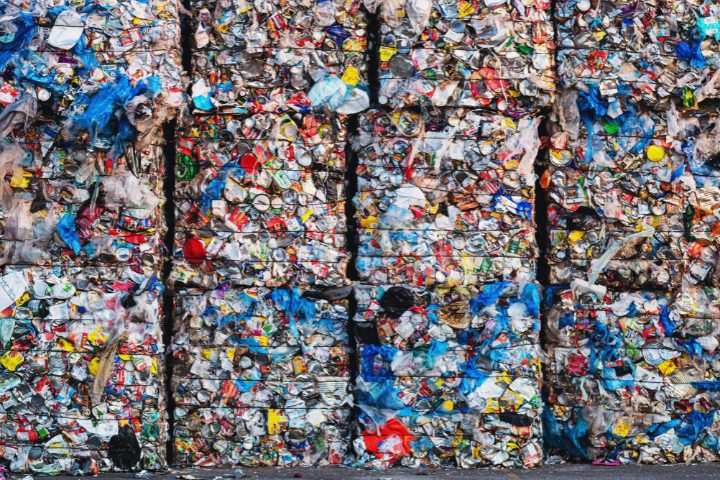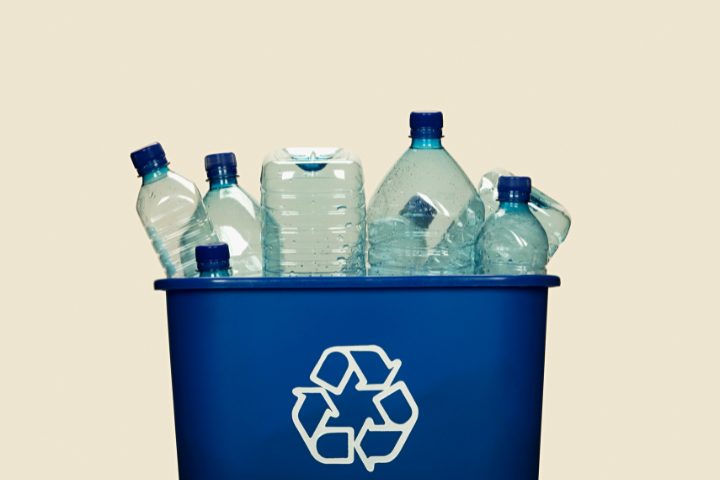Many households diligently separate recyclable items like cardboard, newspapers, plastic bottles, and cans, following community disposal guidelines. Recycling in Japan seems to be enforced quite strictly, which may lead to the assumption of high recycling rates, but the reality is different.
In 2018, Japan’s recycling rate was only 22.7%, far lower than many EU countries’. And it kept falling, reaching a mere 20% in 2021.
In 2019, Yamaguchi Prefecture had the highest recycling rate in Japan, boasting a 32.7% recycling rate compared to the national average of 19.6%.
The lowest recycling rate in Japan was found in Wakayama Prefecture, at 12.2%.
This discrepancy, both within the country and in comparison with the international average, raises questions about calculation methods and waste disposal practices, highlighting the complexity of Japan’s recycling challenges.
How Is Trash Disposed of in Japan? And in the World?

Image credit: Canva
Japan’s main trash disposal method is incineration, and its incineration disposal rate is overwhelmingly high compared to EU member countries. Tight landfill space has long been a serious issue in Japan, and reducing landfill disposal has been a priority. Incineration has become the main means of reducing the amount of waste sent to landfills in Japan, which is why the landfill disposal rate is lower than in European countries.
The disparity in recycling rates between Japan and Europe stems from several key factors. Firstly, Japan calculates its recycling rate based on recyclable materials post-intermediate treatment, while European countries base theirs on pre-treatment waste falling within specific categories. This fundamental difference in calculation methodologies contributes to the apparent gap in recycling rates between the two regions.
Japan’s reliance on incineration for waste disposal significantly contrasts with Europe’s approach, where methods such as Mechanical Biological Treatment (MBT) of residual waste are classified as recycling.
The prevalence of separate collection and recycling of organic waste is more widespread in EU member countries compared to Japan.
A notable development is the ongoing movement in the EU to revise recycling rate calculation methods. This initiative aims to define recycling as the material genuinely recycled into raw products after removing foreign substances, aligning more closely with Japan’s approach. The outcome of this revision is anticipated to influence future recycling rates in both areas.
Despite Japan’s recycling rate stagnating for over a decade, there’s potential for improvement, particularly in recycling organic waste, which constitutes a significant portion of overall garbage. Instead of incineration, exploring alternative methods to repurpose waste into valuable resources is urgent.
Japan and Plastic: A Love Story
What Japan excels at recycling, though, is PET plastic, particularly PET bottles.
With a collection rate of 93% and a recycling rate of 85.8% (as of 2019), collection channels include local governments and organizations (46%) and businesses (54%), utilizing PET bottle-specific trash cans and collection boxes. That is why you will see dozens of bins for cans and PET bottles everywhere.
What is PET?

Image credit: Canva
Polyethylene terephthalate, or PET, is a very good, light plastic material that is very easy to recycle repeatedly.
Japan boasts a state-of-the-art plastic waste management system, advanced infrastructure, and diverse technologies and policies for recycling and waste processing. Ranked second globally by the Plastic Management Index (PMI) after Germany, Japan excels in PET bottle management, reflecting its high PMI score.
Despite the high recycling rate, Japan has one of the world’s highest plastic consumption rates: the average Japanese person uses around 450 plastic bags per year, which is roughly 17 times more than the average citizen in the United Kingdom
In Conclusion: Why Is Recycling in Japan So Hard?
Japan’s status as one of the world’s most advanced and consumer-driven societies comes with a notable consequence: a considerable amount of waste generated per person. This trend is fueled not only by the country’s highly consumptive culture but also by evolving lifestyles and the widespread use of plastics and other materials, which contribute to the growing waste stream.
Despite Japan’s strides in incineration technology, there are significant gaps in its recycling infrastructure. Certain areas still lack robust recycling systems, particularly food and plastic waste. These shortcomings stem from underdeveloped collection mechanisms and the slow pace of recycling technology advancement. Furthermore, the decentralized nature of waste management, with each municipality establishing its own recycling rules, can lead to confusion and inefficiencies across regions. As a result, Japan grapples with the challenge of harmonizing its waste management efforts nationwide while striving to address its mounting waste generation issue.
Addressing the complexities of waste management and recycling in Japan requires a concerted effort to reassess existing practices and explore innovative solutions. By rethinking waste disposal strategies and embracing sustainable approaches, Japan can strive towards achieving higher recycling rates and fostering a more environmentally conscious society.
Related Articles:
- Moenai Gomi or Moeru Gomi? 3 Easy Steps to Follow in Sorting & Throwing Out Your Trash
- The Best Recycle Shop Near Me! 5 Second-Hand Furniture Spots in Tokyo
- The Essential Guide to Zero Waste Shopping in Japan
Moenai Gomi or Moeru Gomi? 3 Easy Steps to Follow in Sorting & Throwing Out Your Trash
Featured image credit: Canva






